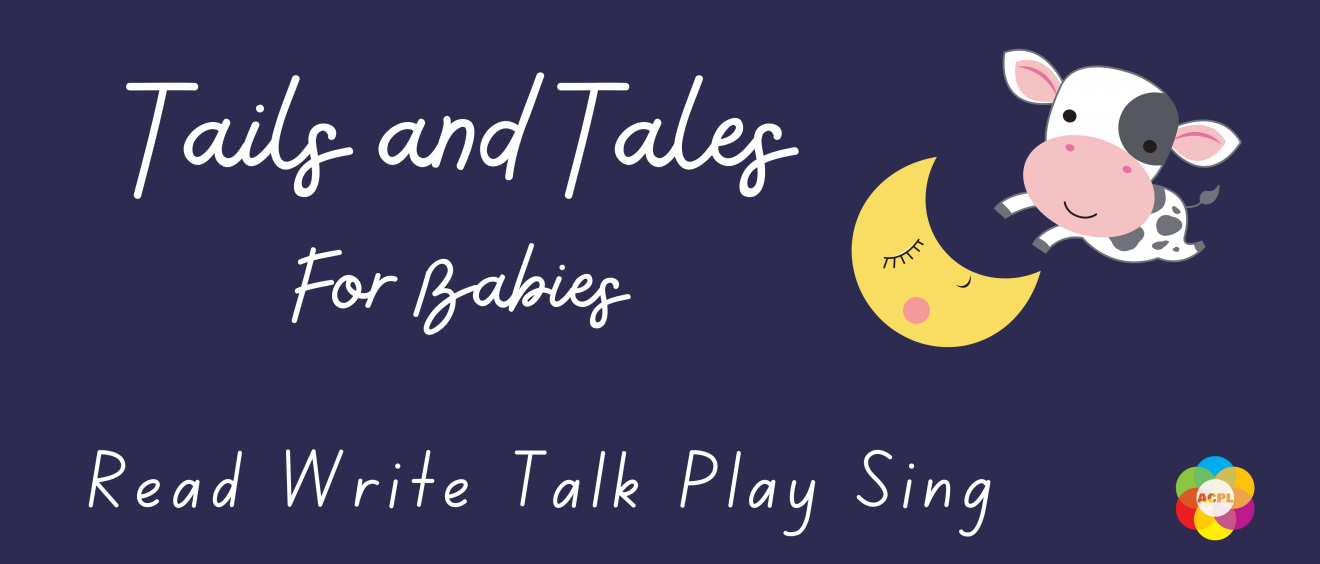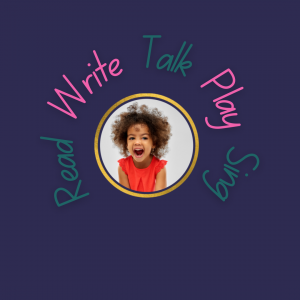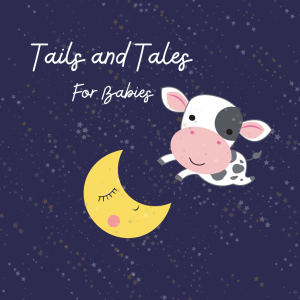
Tails and Tales for Babies
There are many different ways caregivers can support the development of their child’s early literacy skills. The Every Child Ready to Read Initiative promotes five development practices: reading, writing, talking, singing, and playing. Learning to read begins at birth, and you can facilitate the growth of your baby’s brain by using these five simple practices to build a strong foundation for reading.
Ready to read, write, talk, sing, and play, but not sure where to start? Download this printable calendar for 25 daily activities.
Albany County Public Library loves these practices for a couple of reasons: this approach allows caregivers to take an active role early on in their child’s literacy development and can be adapted to suit a child’s individual needs. In this post, you will discover specific ways to include children of all abilities in the early literacy skill-building practices.

Read: Reading together develops vocabulary and comprehension, nurtures a love for reading, and motivates children to want to learn how to read.
- Books with tactile features are great for children with visual impairments. For a child who can’t see or has limited vision, tactile features are like illustrations.
- Use toys and real objects to illustrate the book. For example, while reading the well-loved folktale Stone Soup, have real objects from the story ready for your child to explore — a soup pot, a stone, an onion, a carrot, salt and pepper, and more! Using real objects to reinforce key ideas while reading benefits all children, and in particular children with developmental disabilities.
- Try audiobooks! Sign up with Libby to access audiobook titles you can check out and download.
Write: Children become aware that printed letters stand for spoken words as they see print used in their daily lives.
- A child’s scribbles are precursors to adult calligraphy. Practice writing in different ways with crayons, pencils, markers, or finger paints. For children with blindness or vision impairment, you can also use a brailler or slate and stylus with a computer or an iPad. If it involves mark-making of some kind, it’s writing! You could also try making tactile art. For a wealth of tactile art ideas, check out WonderBaby.org’s Tactile Art for Blind Children.
- Some children may have a hard time with writing activities due to physical disabilities. Consider adaptive tools like pencil grippers and chunky crayons if your child has limited manual dexterity. Give alternative activities that don’t involve physically putting a pen to paper a try, like using an iPad with a kid-friendly art app like Doodle Buddy.
Talk: Talking with children helps them learn oral language, one of the most critical early literacy skills. Children learn about language by listening to caregivers talk and joining in the conversation.
- Talk with your child and around your child. If your child is blind or has low vision, describe the things you see to them. Describe the things in their environment that they can feel, hear, smell, and taste.
- Encourage your child to talk. Ask questions. Respond to what your child says. After asking a question, silently count to ten to give them plenty of response time.
Play: Play is one of the best ways for children to learn language and literacy skills. They learn about language through playing, as the activities help them to put thoughts into words and talk about what they are doing. As Mr. Rogers said, “Play is often talked about as if it were a relief from serious learning. But for children, play is serious learning. Play really is the work of childhood.”
- Create a safe play environment and encourage your child to explore. Some children may need extra support when engaging in independent exploration.
- If your child is blind or visually impaired, define their space with meaningful objects kept in predictable, accessible, and detectable locations.
- Provide toys that engage senses — rattles, textured balls, vibrating toys, and colorful blocks.
- Encourage your child to pretend and create stories!
Sing: Singing develops language skills. Singing slows down language so children can hear the different sounds in words and helps children learn new words and information.
- Sing the alphabet and nursery rhymes, listen to recorded music, or clap along to a song to demonstrate syllables.
- If your child’s ability to verbalize or hear makes singing difficult, engage them in other rhythm-building activities like hand clapping, marching, and body swaying to music.

Visit the Library to check out books, find information for our summer reading program, attend a storytime, or speak with a Youth Specialist to learn more about early literacy and learning.
